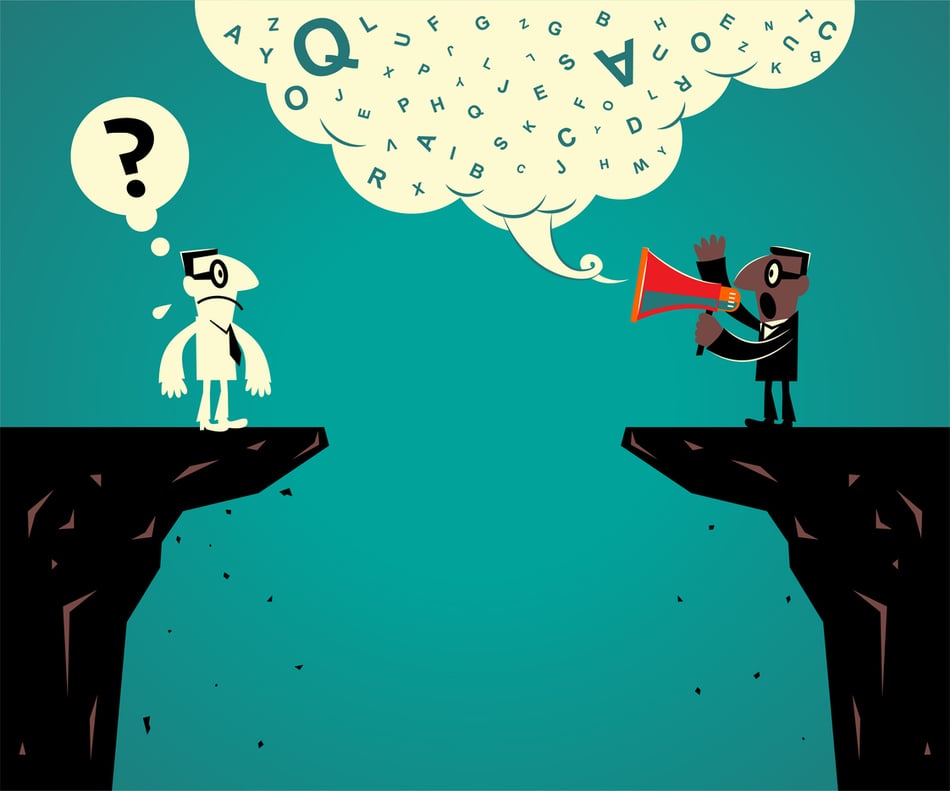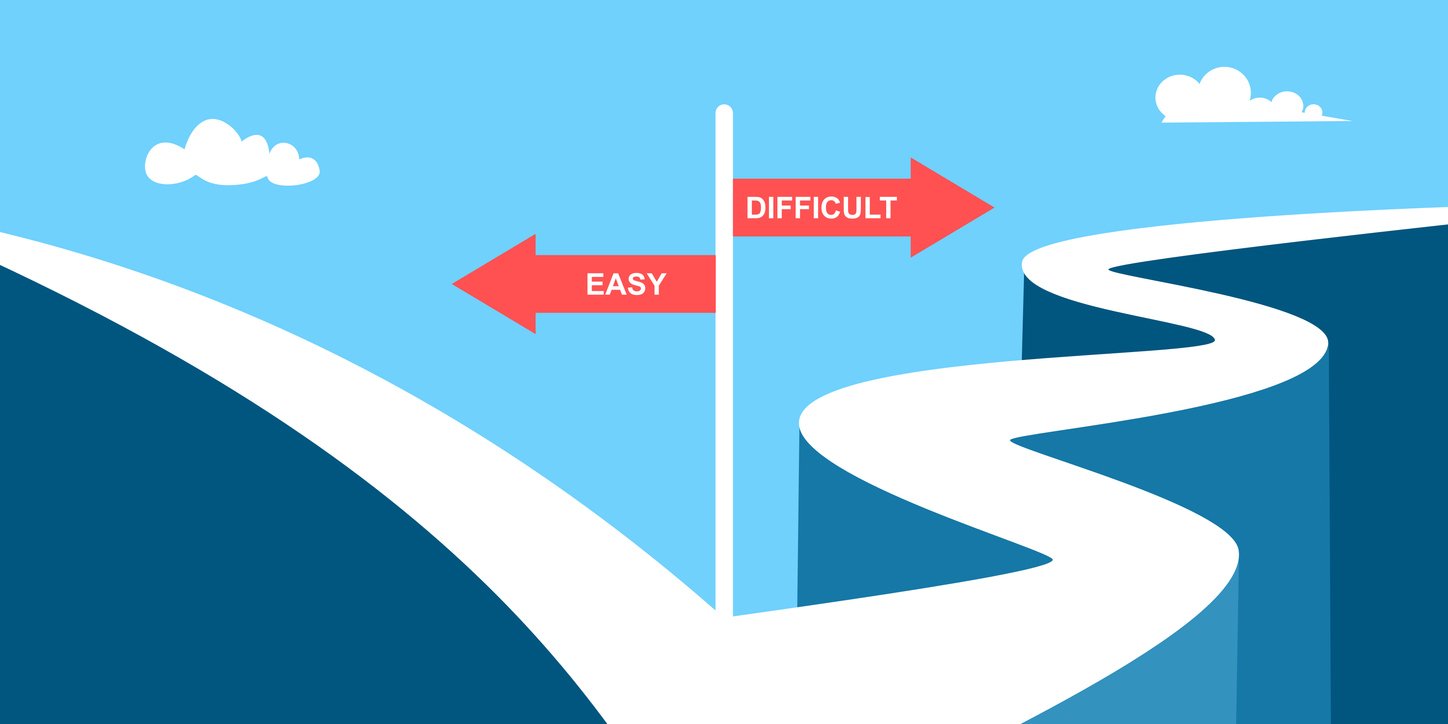If you and your team have recently completed The Five Dysfunctions of a Team Workshop with an experienced facilitator, your work has just begun.
Words of Caution - If you and your team have yet to complete a Five Dysfunctions of a Team Workshop with an experienced facilitator, right now is the perfect time to do so. If you and your team are experiencing moderate to significant team dysfunctions, my strongest recommendation is to not attempt to complete these activities on your own.
High-performing leaders are deeply aware of the costs of dysfunction in their team because they understand the signs. Our Clients understand that teams are inherently dysfunctional. Accordingly, it is essential to always be working on how your team works together to continuously lean into the winds of dysfunction.
The greatest lesson learned from working with our Clients over the past 17-plus years is this work is never, ever done. It is normal to regress into old habits and patterns. This is your opportunity to choose to not fall into that trap.
This is not a checklist that ever is completed. It is always important to remember the cadence Patrick Lencioni laid before us.
...Without vulnerability-based trust, it will be impossible for the team to engage in productive conflict.
...Without productive conflict, it will be difficult for the team to commit to decisions.
You get the picture.

Your Five Dysfunctions of a Team journey is never complete. It is essential to continue doing the actual work, particularly regarding vulnerability-based trust, and ensuring you are using agreed-upon team norms.
Teams that systematically continue the hard work to overcome The Five Dysfunctions of a Team reap the rich rewards that will come.
Overcoming The Five Dysfunctions of a Team takes commitment and time. The investment is worth it and never quite finished. High-performing leaders and teams commit to ongoing learning through repeated dialogues and engagements coupled with further reading and skills development.
Interested teams do what is convenient. Committed teams do whatever it takes.
Committed teams continue their work post-workshop, engaging at least quarterly, ideally weekly and monthly.
Following are powerful activities you can implement to make your team's transformation last after an in-depth reading or workshop centered on the book.
You may wish to check out our Five Dysfunctions of a Team Infographic.
Dysfunction 1: Trust Activities
One of the biggest challenges facing many teams is overcoming the first dysfunction, which is building vulnerability-based trust. Building vulnerability-based trust takes serious time, but it can be accelerated through activities that promote open and honest communication.
Icebreakers
Incorporate icebreaker activities into your weekly meetings to help team members practice vulnerability in generally safe circumstances, sharing details that reveal their unique personalities and histories. Go beyond small talk. Break down barriers and continually cultivate connections.
Favorites include:
- Icebreaker Thumball
- Icebreaker Decks from Bestself.co
Personal Histories
A personal histories activity allows team members to become more vulnerable with one another without the risk of negative repercussions, enabling them to see their teammates' motivations and intentions more clearly, too. Here is a personal histories exercise you can follow.
TriMetrix® HD
The TriMetrix® HD Assessment is the most powerful psychometric assessment available with validity backed by brain research. The results of this comprehensive personality aptitude assessment may be leveraged as a foundation to build your sustainable competitive advantage through your people, how your team works together, and leadership. The best way to appreciate the powerful insights the TriMetrix® HD can provide you is to complete your own sample assessment.
Powerful Reinforcement Through the Onboarding of New Team Members
Can you imagine a more powerful way to accelerate the onboarding of new team members than to complete personal histories exercises and icebreaker activities as a team? And imagine the new team member improving their self and interpersonal awareness through the powerful psychometric assessment - the TriMetrix® HD Assessment.
Moreover, this powerful onboarding approach also helps enhance vulnerability-based trust in your team.

Dysfunction 2: Conflict Activities
As you continue your commitment to always enhancing your team’s vulnerability-based trust, you will be better prepared to move into activities that foster productive conflict and reduce fear around dialogue that challenges and questions.
Five Dysfunctions Team Assessment Report: Conflict
Your Team Assessment Report is a powerful guide to help surface insights that promote engaging discussion and healthy conflict.
After the workshop, require team members to review the Team Assessment Report: "Team Culture Questions - Mastering Conflict" Section (page 13). What is going well? What needs to be improved? What are the costs of going back to old habits?
Set aside time with your team and read aloud the Team Assessment Report, pause for emphasis, and ask for team members' thoughts and reactions. Go around the room and actively encourage dialogue and debate.
Discuss the "Conflict" findings from the Team Assessment Report.
Ask, “What is acceptable behavior during a conflict?" and lead into a group discussion. Make sure each team member contributes to the dialogue.
Consciously practice adhering to your team’s conflict norms during a practice topic.
Use a Conflict Miner During Meetings
Teams that effectively use conflict engage in meetings where issues get discussed deliberately. It can be very helpful for your team members to ask themselves, “What is it that we collectively seek?" Chances are, your team ultimately seeks to win (or at least advance) and the best way to win is to ensure the best ideas are fleshed out and team members have had the opportunity to discuss/debate in a safe and productive manner for everyone.
Problems need to be on the agenda and addressed involving each team member's feedback. It is beneficial to have a "problem owner" who brings the issue to the team, a scribe recording the activity, and a "conflict miner" committed to ensuring each meeting participant is engaged purposefully. Having meetings of this type can be unnerving at first, but they are quite effective with practice.
There are two primary tasks of the conflict miner:
- Interrupt the normal pattern of collective team behaviors as well as personality and position power norms that would otherwise manifest and;
- Help team members engage in conflict on purpose and with safety.

Dysfunction 3: Commitment Activities
Five Dysfunctions Team Assessment Report: Commitment
It is essential to make time to get this right. Slow down to speed up.
Require team members to review the Team Assessment Report "Team Culture Questions - Achieving Commitment" Section (page 14) in detail.
As individuals and a team, review each question and score yourselves individually and collectively. What has improved? What needs to be improved? What are the costs of not making this improvement? Get granular.
Remember. It is normal to slip into old behaviors and norms. This is why this work is never done.
Cascading Messaging
Practice cascading messages to gain alignment and commitment. This practice involves ensuring communication flows from leadership to all levels of an organization in a timely fashion until it reaches all intended and desired recipients.
Knowledge is power, and when some have information that others do not, it can lead to wasted time, energy, resources, and unnecessary politics.
Dysfunction 4: Accountability Activities
Five Dysfunctions Team Assessment Report: Accountability
Require team members to review the Team Assessment Report "Team Culture Questions - Embracing Accountability" Section (page 15) in detail.
As individuals and a team, review each question and score yourselves individually and collectively. What has improved? What needs to be improved? What are the costs of not making this improvement? Again, get granular.
Expect your team to slip back into old behaviors and norms. This work is never quite finished.
Accountability Norm Focus
If you have already established accountability norms during your workshop, review page 15 (Team Culture Questions - Embracing Accountability) to identify one or two challenge areas to consider focusing on as a team.
Which is most important for the team to improve right now? What is the expected outcome when successfully improved?

3-3-1 Feedback Loops
Use 3-3-1 Feedback Loops on a monthly or bimonthly basis. Have each team member share the following:
- Three things going well
- Three things not going well
- One thing they need help with
Make time to identify the key meetings and dialogues where you will improve accountability. Schedule time for 3-3-1 Feedback Loops.
Adapt this powerful approach for your team’s needs. Perhaps the 3-3-1 consumes more time than necessary, or perhaps you and your team members come to realize you really do not have three things not going well every time you engage in this powerful activity.
If this is truly the case for you and your team, then adopt a 2-2-1 or 1-1-1 approach. Just remember to avoid artificially limiting time for the sake of saving time. It is often very advantageous to slow down to speed up.
Dysfunction 5: Results Activities
Five Dysfunctions Team Assessment Report: Results
Have team members review the Team Assessment Report "Team Culture Questions - Focusing on Results" Section (page 16). Request that team members prepare notes and be prepared to share their perspectives from a place of preparation.
Individual vs. Team Mindset
Shape awareness of the state of the team's mindset.
Ask: “Does our team seem more individual or team-focused?"
Ask: “Where is our team more individual-focused?”
Ask: “What are the consequences of individual or team-focus?"
Discuss potential blind spots as a team and make a plan to get closer to a team-focused mindset.
The Advantage: Six Critical Questions
Read page 77, “Six Critical Questions" from The Advantage by Patrick Lencioni. Ask each team member to score each question. Then, go around the room and capture the scores.
Invite team members to discuss their observations.
Ask team members, “Which question is most important right now to improve?"

Conclusion: Beyond the Five Dysfunctions
As mentioned previously, the stakes are incredibly high, and the important work of overcoming these dysfunctions is never quite finished.
Engage in these activities to help practice and adopt the lessons of The Five Dysfunctions of a Team. Greatness within a team requires constant gentle pressure - attention to performance, results, accountability, and culture.
Suppose you seek to continually improve your team and build your competitive advantage. In that case, you can reset on the Five Dysfunctions through a facilitated workshop, invite new team members to complete the TriMetrix® HD Assessment, and explore new resources such as The Advantage by Patrick Lencioni and Mastering the Rockefeller Habits by Verne Harnish.
Call on us. We are here to help you and your team do their best work.
Schedule a brief dialogue to get started unleashing your team's potential.
More Powerful Five Dysfunctions of a Team content:
Chris Young is a Trusted Advisor To Founders / CEOs | Certified Scaling Up Coach | Builder of People, Leaders, Teams & Economic Moats | Strategist and proud founder of The Rainmaker Group.




